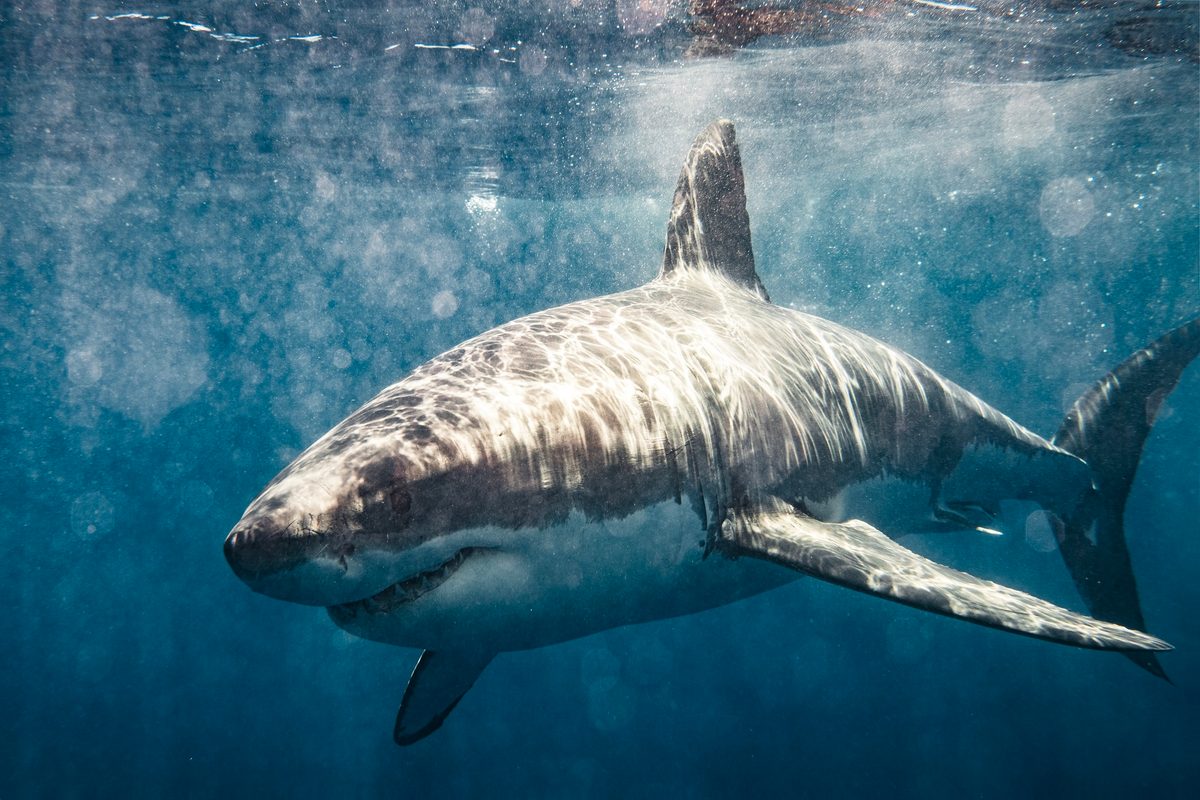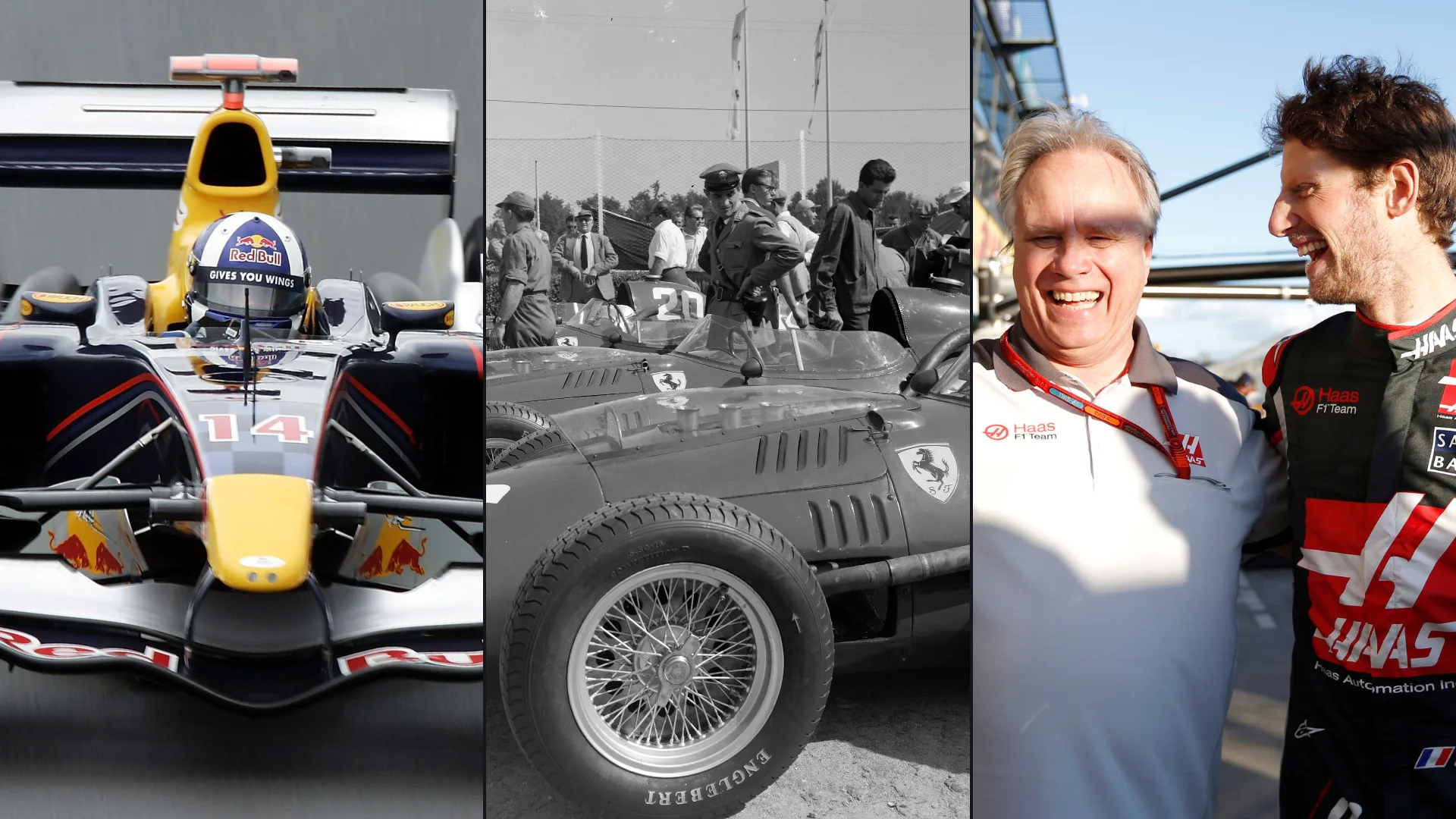Introduction
Dental implants have become one of the most successful dental treatment modalities, offering patients a reliable option for the replacement of missing teeth. Unlike conventional restorative alternatives, such as removable dentures or fixed bridges, implants provide better stability, functionality, and aesthetics by closely mimicking the natural form and function of teeth.1 The success of implant therapy is not solely dependent on surgical techniques but also on precise diagnosis, comprehensive treatment planning, and adherence to both radiographic and biological considerations.2,3 These elements are essential for ensuring long-term clinical success and patient satisfaction, making them indispensable aspects of implant dentistry. Radiographic imaging plays an integral role in the planning and execution of implant therapy. It provides clinicians with critical information about the patient’s oral anatomy, including the quality and quantity of available bone, the location of vital anatomical structures such as nerves and sinuses, and the presence of pathologies or other conditions that may affect implant placement.4,5 Radiographic examination is not only important in determining the optimal implant size and position but also in minimizing hazards during surgery and allowing post-operative follow-up. For instance, marginal bone level assessment by radiographs is considered one of the basic criteria for evaluating the success of dental implants. This type of assessment is necessary for the early detection of complications such as peri-implantitis and for ensuring the long-term stability of the prosthetic restoration.6
Radiographic evaluation has a place in three major phases of implant therapy, namely, presurgical imaging, surgical imaging, and post-prosthetic imaging. The imaging modalities used during the presurgical phase include panoramic radiography, periapical radiographs, and cone-beam computed tomography (CBCT).7 Among these, CBCT has emerged as the gold standard due to its ability to present three-dimensional and high-resolution images of the proposed implant site.8 This ability enables the clinician to assess the bone dimensions, the anatomical structures, and the possible risk factors precisely, thus facilitating accurate surgical planning.9 During the surgical phase, radiographs are commonly employed to confirm the positioning of the implant using guide pins and to verify its proximity to adjacent anatomical landmarks.10 Radiographic imaging during the post-prosthetic phase is used to monitor osseointegration, marginal bone loss, and the integrity of the implant-supported restoration.11 While sophisticated imaging techniques have significantly enhanced the precision and predictability of implant therapy, no single modality is ideal for all stages uniformly; thus, a mix-and-match approach is clinically applied in different combinations depending on the case.12 Professional organizations, such as the American Academy of Oral and Maxillofacial Radiology, advocate for cross-sectional imaging, especially CBCT, of prospective implant sites due to its unsurpassed diagnostic capability.13 However, compliance with these recommendations is highly variable among practitioners and depends on factors such as the availability of technology, cost, clinical training, and personal preference.14 This variation indicates that additional studies on the radiographic practices of dental professionals should be conducted to help them adhere to evidence-based guidelines.
Biological parameters, apart from radiographic considerations, also play a critical role in the success of dental implants. The distance between adjacent implants, the distance between a natural tooth and an implant, and the biological width of dental implants are factors essential for the health of the tissues around the implant and the aesthetic outcome.15 These parameters have a direct impact on the preservation of interproximal bone and dental papilla, which are crucial for the long-term stability of the implant and patient satisfaction.16 Lack of knowledge or awareness regarding these biological principles may lead to complications, including bone loss and inflammation, affecting the aesthetics and overall treatment outcome.17 Despite the importance of these factors, knowledge, attitude, and practice of the dental fraternity regarding radiographic considerations and biological parameters in implant therapy remain scant.18 Clinical practices, influenced by various geographical, economic, and educational factors, further highlight the need for region-specific studies.19 Identifying these perceived variations is crucial for addressing deficiencies in knowledge or practice and planning targeted interventions to improve standards of care. This study attempts to fill these gaps by exploring the attitudes and practices of dental practitioners concerning radiographic prescriptions in implant therapy and their knowledge regarding biological considerations of implants. The study focuses on practitioners in the region of [region, eg, Western Saudi Arabia] to understand their preferred methods of radiographic assessment across different stages of implant therapy and their understanding of critical biological parameters. The results will provide insights into current practices, identify areas that require improvement, and offer recommendations based on evidence to enhance standards of care in implant dentistry.
In the Middle East, particularly in Saudi Arabia, studies have revealed a growing awareness of the importance of radiographic protocols in implant planning, but also significant variation in clinical practice. Research by Al-Johany et al highlighted that while most practitioners recognized the diagnostic value of CBCT, its use was still limited due to accessibility and cost constraints. A more recent study by Al-Ekrish et al reported improved adoption of CBCT in urban areas of Saudi Arabia but continued reliance on panoramic imaging in less-equipped settings. These regional findings underscore the need to assess current practices and practitioner knowledge within the local context to align with global best practices.
The results of this study also have implications for clinical practice and education: a need to be identified for continuous professional development, increased access to magnification tools in order to improve diagnosis, and the dissemination of best practices through professional organizations.20 This study aims to enable clinicians to reflect more deeply on considerations related to radiography and biology, contributing to the optimization of treatment outcomes and the advancement of implant dentistry in general. Ultimately, this research hopes to bridge the gap between theoretical knowledge and practical application, equipping dental practitioners with the ability to provide safe, efficient, and aesthetically pleasing implant treatments, thereby improving patient care and advancing implant dentistry as a field of excellence and innovation.
Materials and Methods
This investigation aimed to assess the attitude and practice of dental professionals in making radiographic prescriptions at different phases of implant treatment, as well as their knowledge pertaining to some critical biological considerations in implant dentistry. In line with this objective, a questionnaire-based survey was administered to a carefully selected sample of dental professionals from various specialties. The methodology followed in this study comprehensively covered the sequential process of participant recruitment, survey development, data collection, and analysis.
Study Design
The present study was cross-sectional survey research designed to investigate the radiographic prescription behavior and knowledge level among dental professionals participating in implant therapy. This design allowed for capturing a snapshot of the current practices and perspectives in a diverse group of participants and provided important insights into clinical trends and possible areas for improvement. Emphasis on the attitudes of the respondents towards radiographic use and biological considerations of implants provided a balance between procedural and theoretical aspects of implantology. The study was conducted in accordance with ethical standards and followed a timeline to ensure the completeness of data collection and analysis.
To ensure the relevance and clarity of the questionnaire, a multi-step validation process was undertaken during its development. Initially, the content of the questionnaire was formulated based on an extensive literature review and expert input from academic staff specializing in implantology and oral radiology at King Abdulaziz University. Following the initial draft, face and content validity were assessed by a panel of five experienced dental professionals representing different specialties. Their feedback was used to refine the wording, eliminate ambiguity, and ensure alignment with the study objectives. Subsequently, a pilot test was conducted with 10 dental professionals who were not included in the final sample. The purpose of the pilot was to evaluate the comprehensibility, relevance, and flow of the questions. Minor revisions were made based on participant feedback to improve clarity and reduce the risk of misinterpretation. While the pilot test helped confirm face and content validity, formal statistical validation measures such as reliability testing (eg, Cronbach’s alpha) were not performed due to the concise structure and categorical nature of the questionnaire. Nonetheless, the iterative feedback-based refinement process contributed to improving the instrument’s overall coherence and applicability to the study population.
Participant Recruitment
The participant group in this study consisted of 70 dental professionals from different specialties, including maxillofacial surgery, prosthodontics, periodontics, restorative dentistry, and implantology. This diverse cohort included both consultants with extensive experience and residents undergoing advanced training, offering a balanced mix of different levels of expertise. Participants were selected based on professional networking, direct invitation, and referral. Inclusion criteria included being active in the respective specialties and involved in treatments related to implants. Participants were divided by specialty and role as follows:
- Maxillofacial Surgery: Consultants 6; residents 5.
- Prosthodontics: Consultants 15; residents 8.
- Periodontics: Consultants 13; residents 10.
- Restorative Dentistry: Consultants 3; residents 4.
- Implantologists: Specialists in implant dentistry 6.
This large pool of participants ensured wide capture of practices, reflecting individual preferences and specialty-specific trends.
Survey Development
Data was collected using a structured questionnaire specifically developed to achieve the research objectives. The instrument comprised 10 questions with closed-ended answers related to the prescription practices of the study participants and their knowledge of biological aspects of implant therapy. In developing this questionnaire, a comprehensive review of the literature and expert opinions was sought to ensure the best scope of the paper. The areas covered in the questions included:
- Occupation: Respondent’s professional role and specialization.
- Preferred Radiographic Assessment: Techniques used before single implant therapy.
- Preferred Radiographic Assessment: Techniques used before multiple implant therapy.
- Intraoperative Radiographic Use: Whether radiographs are taken with the parallel guide pin during implant placement.
- Post-Placement Radiographs: Radiographic assessment after implant fixture placement.
- Radiographs After Healing Abutment Placement: Practices during the healing phase.
- Post-Crown Insertion Radiographs: Assessment following prosthetic restoration.
- Peri-implant Biological Distance: Knowledge of optimum spacing for maintaining dental papilla and interproximal bone.
- Tooth and Implant Biological Distance: Understanding spacing for adequate interproximal bone and papilla.
- Implant Biological Width: Knowledge of biological parameters critical for implant success.
The questionnaire was pretested on a small pilot group of dental professionals to ensure clarity and relevance of questions and wording. Responses from this pilot test were incorporated into the final version of the questionnaire.
Data Collection Procedure
The survey was distributed to the participants through physical and electronic means, depending on each participant’s accessibility and preference. Participants were given specific instructions on how to complete the questionnaire, and confidentiality of their responses was guaranteed. Data collection lasted for 30 days to give participants sufficient time to answer the questions thoughtfully. Follow-up reminders were issued to improve the response rate. The questionnaires were accompanied by a cover letter explaining the study’s objectives, the voluntary basis of participation, and the assurance of confidentiality for the data collected.
Ethical Considerations
Ethical guidelines were strictly followed in this study. Prior to data collection, informed consent was obtained from the participants. They were assured of confidentiality and anonymity, and it was promised that data would only be used for research purposes. No incentives were given to participants, and they were informed about their right to withdraw from the study at any time without any consequences. The study protocol was reviewed and approved by the Dental school of King Abdulaziz University, the Research Ethics Committee proposal no. 207-01-21, and the study complies with the Declaration of Helsinki.
Data Management and Statistical Analysis
The responses from the questionnaires were collected, and the data were collated and stored in a secured database. Individual responses were anonymized during data entry. Descriptive statistics were used to summarize the data, including frequencies, percentages, and means where appropriate. Radiographic preferences and knowledge-related questions were categorized and analyzed for trends or differences among specialties.
The sample size for this study was determined based on practical feasibility, participant availability, and the goal of capturing a representative distribution across multiple dental specialties. A total of 70 participants were included, comprising consultants and residents from maxillofacial surgery, prosthodontics, periodontics, restorative dentistry, and implantology. Although a formal a priori sample size calculation was not performed, post hoc power analysis indicated that, assuming a medium effect size (w = 0.3) for chi-square tests, the sample size of 70 achieves approximately 70% power at a 5% significance level. For ANOVA tests comparing knowledge levels among five specialty groups, the current sample achieves sufficient power (>80%) to detect large effect sizes (f = 0.4), though it may be underpowered to detect smaller effects. Future studies with larger samples and formalized sample size calculations are recommended to increase statistical power and generalizability of the findings.
The association between participants’ characteristics, such as specialty and experience level, and their radiographic practice and knowledge were analyzed using inferential statistical methods. The tests used during the analysis of differences included chi-square tests and ANOVA tests, at a significance level of p < 0.05. Advanced statistical software was applied in data analysis, and tabular and graphical representations of the results provided insights into interpretations. This exhaustive approach ensured accuracy and reliability of the study findings. A post hoc power analysis was conducted to evaluate the adequacy of the sample size. Using a medium effect size (w = 0.3) for chi-square tests comparing radiographic practices across specialties, the required sample size was estimated at 88 to achieve 80% power at a 5% significance level. The current sample size of 70 achieves approximately 70% power under these assumptions. For ANOVA assessing knowledge differences across five specialty groups, the required sample for detecting a medium effect size (f = 0.25) with 80% power was approximately 200, suggesting that the present study may be underpowered for medium effects. However, for detecting large effects (f = 0.4), the current sample size exceeds the required minimum, achieving over 85% power. These results underscore the need for larger samples in future research to robustly detect smaller effect sizes across subgroups.
Timeline of the Study
The research was conducted over three months, which included the following stages:
- Phase 1: Formulation of the questionnaire and its piloting (1 month).
- Phase 2: Sampling and administering the survey to the respondents (1 month).
- Phase 3: Data collection, entry, and analysis (1 month).
This timeline provided sufficient time for each phase without compromising the quality and depth of the research process.
Importance of the Study
The structured approach followed in this research underlines its importance in assessing and potentially improving clinical practices in implant dentistry. By focusing on radiographic prescription behaviors and biological considerations, this study aims to contribute to improvements in treatment planning and outcomes of implant therapy.
Results
Distribution of Respondents by Occupation
A total of 70 respondents took part in the study. This heterogeneous population of dental professionals was summarized as shown in Table 1.
|
Table 1 Distribution of Respondents by Occupation
|
The highest representation was by Periodontics Consultants and Prosthodontics Consultants, each constituting 24.3% of the sample. The lowest representation was by Restorative Consultants and Restorative Residents, which comprised only 4.28% each. These findings underline the variety of respondents and reflect the diversity in clinical experience and expertise.
Preferred Radiographic Methods for Single Implant Therapy
Analysis of preferred radiographic methods for single implant therapy (Figure 1) showed some interesting trends. Most of the responders, 43 (61.4%), preferred CBCT as the mainstay of imaging. The next in preference were panoramic radiographs as indicated by 22 (31.4%) respondents, while the least preferred was the periapical radiographs, favored by 5 respondents (7.1%). CBCT dominated the preference due to its higher applicability in three-dimensional imaging, which is necessary for accurate planning of dental implants.16 Panoramic radiographs are less preferred and thus represent a simpler and cheaper option in resource-constrained settings. The preference for periapical radiographs was limited due to their application in only a few instances because of two-dimensional imaging limitations.
 |
Figure 1 Radiographic Methods for Single Implant Therapy. This pie chart illustrates the preferred radiographic methods for single implant therapy among respondents. The analysis revealed (61.4%) favored CBCT as their primary imaging technique. Panoramic radiographs were the next preferred method, with (31.4%). Periapical radiographs showed (7.1%).
|
Preferred Radiographic Methods for Multiple Implants Therapy
For multiple implant therapy (Figure 2), CBCT was the overwhelmingly preferred modality, selected by 69 respondents (98.6%). Only one respondent (1.4%) preferred panoramic radiographs for this application. These findings underscore the critical importance of CBCT in complex cases requiring detailed 3D imaging for precise planning and execution.21 Panoramic radiographs, while occasionally utilized, were not considered sufficient to meet the demands of multiple implant procedures.
 |
Figure 2 Radiographic Methods for Multiple Implants Therapy. This pie chart illustrates the preferred radiographic methods for multiple implant therapy among respondents. The analysis revealed that CBCT was (98.6%). Only (1.4%) preferred panoramic radiographs for this application.
|
Correlation Between Occupation and Radiographic Practices
The correlation between occupation and radiographic practices (Figure 3), showed certain trends. In single implant therapy, the use of CBCT was largely by specialists, including Implantologists, Maxillofacial Surgery Residents, Periodontics Consultants, and Periodontics Residents. Prosthodontics Consultants showed the widest variation in their preferences for all three radiographic modalities. Panoramic radiographs were used largely by Prosthodontics Consultants and Residents, whereas periapical radiographs were used exclusively by Prosthodontics Consultants. For multiple implant therapy, CBCT was almost universally preferred in all professions, except for one—a Maxillofacial Surgery Consultant who chose a panoramic radiograph. This strong preference for CBCT indicates its recognition as the gold standard for radiographic assessment in complex cases. These results show a clear correlation between clinical specialization and the choice of radiographic modality, dictated by training, clinical requirements, and the complexity of procedures.
 |
Figure 3 Correlation Between Specialty and Radiographic Practices. This stacked bar chart shows the correlation between occupation and radiographic practices. For single implant therapy, CBCT was favored by specialists, including Implantologists, Maxillofacial Surgery Residents, Periodontics Consultants, and Periodontics Residents. Panoramic radiographs were mainly used by Prosthodontics Consultants and Residents, while periapical radiographs were exclusively used by Prosthodontics Consultants.
|
Radiographic Practices During Implant Placement
The study also explored radiographic practices during implant placement (Figure 4). Among respondents who actively place implants (42), 81% (34/42) reported taking radiographs with a parallel guide pin, demonstrating a strong preference for this practice to ensure accurate implant positioning. Additionally, 97.6% (41/42) of these respondents reported taking radiographs after implant fixture placement, emphasizing the widespread adoption of this practice to confirm proper implant placement. In contrast, a radiograph is taken after the placement of the healing abutment only by 12.9% (9 respondents), whereas the majority, 87.1%, did not find it necessary. Relating to the insertion of the crown, 47.1% of the respondents who place the crown take a radiograph. This indicates that radiographic confirmation is considered important by almost half the practitioners who perform the procedure.
 |
Figure 4 Radiographic Practices During Implant Placement. This bar chart illustrates the radiographic practices during implant placement among respondents. A significant 81% reported taking radiographs with a parallel guide pin. Additionally, 97.6% of these respondents take radiographs after implant fixture placement. In contrast, only 12.9% take radiographs after the placement of the healing abutment. Regarding the insertion of the crown, 47.1% of the respondents take a radiograph.
|
Implant Biological Considerations Knowledge
Some of the key biological considerations in implant therapy were assessed (Refer to Table 2). On the optimal biological distance between implants to achieve adequate papilla and interproximal bone, 57 respondents (81.4%) correctly identified 3 mm as the ideal distance. Fewer respondents (14.3%) felt that 2 mm was sufficient, while 4.3% were not sure. On the most biologically compatible width between a tooth and a dental implant, 74.3% of the participants preferred 1.5 mm, while 21.4% preferred 3.0 mm. Again, 4.3% of participants were uncertain as to the best width. This shows that there is reasonable unanimity among the respondents on the maintenance of specific widths to preserve dental papilla and interproximal bone. When questioned about the biological width of dental implants, the respondents chose 2 mm (45.7%) and 3–4 mm (45.7%) almost equally. A few responses (1.4%) were 5–6 mm, and the rest (5.7%) said they did not know. This division indicates variability in understanding or interpretation of the biological width concept.
 |
Table 2 Implant Biological Considerations Knowledge
|
Results reflected a strong trend toward CBCT for all professions in multiple implant therapy, revealing the acknowledged added value of precision and detail. Occupation was significantly associated with radiographic habits, with clear preferences emanating from specific clinical specialties and procedural complexity. Furthermore, there was a large knowledge of biological considerations in implant practice; a majority identified optimal distances and the biological width as critical to successful outcomes. However, variability in responses indicates that education and standardization of practices in implantology are still required.
Discussion
This survey presents a detailed assessment of attitudes to radiographic prescription in different stages of implant therapy and implant biological considerations knowledge among dental practitioners. The results not only highlight the present clinical practice but also reveal variability and potential deficiencies in both radiographic and biological competence in implantology.
One of the most salient findings from this survey is the overwhelming preference for CBCT as the modality of choice in radiography, especially for multiple implant therapy. Indeed, a full 98.6% of the respondents favored CBCT for such cases, which demonstrates that clinicians recognize the value of this imaging technique in providing detailed three-dimensional visualization of the proposed implant site. This is in agreement with the literature, which states that CBCT is considered the gold standard for implant planning due to its capability for high-resolution imaging of bone structure, anatomical landmarks, and potential risk factors.22 For single implant therapy, although CBCT was still the preferred modality (61.4%), there was more variation, with panoramic radiographs being the second most common technique used (31.4%), followed by periapical radiographs (7.1%). This could reflect clinical needs, cost, or access to advanced imaging modalities. While panoramic radiographs are less precise compared to CBCT, they are usually valued for their wider field of view and lower cost, hence considered practical in resource-limited settings.23 The infrequent use of periapical radiographs underlines the limited possibilities of this type of imaging modality in implantology, since two-dimensional images provide limited diagnostic capabilities, especially in complicated cases.24 This indicates an increased conformity of the majority to recommendations by professional organizations, such as the American Academy of Oral and Maxillofacial Radiology, which recommends cross-sectional imaging for implant site assessment.25 However, variability in radiographic preferences for single implant cases shows that factors like clinical training, accessibility, and personal experience still influence decision-making processes.
In the Middle East, studies have shown a strong preference for CBCT in dental implantology.26,27 For example, a study conducted in Saudi Arabia found that CBCT was the preferred imaging modality for implant planning due to its superior dimensional accuracy and ability to visualize anatomical structures without superimposition.28 Similarly, in South Africa, a survey revealed that CBCT was commonly used alongside panoramic radiographs for implant planning.29,30 The emphasis on advanced imaging techniques aligns with our findings, highlighting the importance of detailed visualization for successful implant placement. In India, the use of CBCT in dental implantology is also prevalent.31 A study from India indicated that CBCT was the preferred choice for implant planning due to its ability to provide three-dimensional images, which are crucial for accurate diagnosis and treatment planning.32 In the USA, CBCT is widely accepted as the gold standard for implant planning, with many practitioners recognizing its value in providing detailed bone structure visualization and reducing the risk of complications.33 Our survey findings align well with studies from these regions, showing a strong preference for CBCT in implant therapy. The variability in radiographic preferences for single implant cases and the influence of clinical training, accessibility, and personal experience are consistent across different regions. Additionally, the emphasis on continuous education and standardization of protocols is a common theme in improving clinical practice and patient outcomes.
Radiographic preference analysis demonstrated a significant difference as per the subjects’ specialty and role. CBCT was the majority preference for Implantologists, Maxillofacial Surgery Residents, Periodontics Consultants, and Periodontics Residents in single implant therapy. The use of CBCT, panoramic, and periapical radiographs demonstrated the most varied preferences from the Prosthodontics Consultants. This is probably a reflection of the wider scope of prosthodontic training in both the restorative and surgical aspects of implant therapy. CBCT was the almost unanimous choice for multiple implant therapy across all specialties, except for one panoramic radiograph by the Maxillofacial Surgery Consultant. This strong consensus supports that CBCT plays a crucial role in complex implant cases where detailed imaging is required for precise planning and complication avoidance.34 The response also shows that there is marked variation in radiographic practice with clinical specialization and procedural complexity, with specialists in implant-related fields favoring advanced imaging techniques to attain optimal outcomes.
The questionnaire also sought information on radiographic practices at the time of implant placement and subsequently. Of those in active implant placement practice (42), 81% utilized radiographs with a parallel guide pin to confirm proper positioning intraoperatively. In addition, 97.6% of those in active implant placement took radiographs after implant fixture placement, demonstrating a near unanimous concern for the confirmation of implant placement in order to avoid complications. Radiographic practices during the healing and prosthetic phases of treatment were considerably different. Only 12.9% of the total responses took radiographs after placing a healing abutment; therefore, not very many clinicians judged the imaging stage after the abutment positioning. Comparatively, after the final setting of the crown, this had been done by 47.1%, which evidenced interest in the verification of the situation at that end stage in the prosthesis. These findings point to possible lapses in post-surgical monitoring practices, especially during the healing phase, which may affect the timely detection of complications such as marginal bone loss or peri-implantitis.35
In the evaluation of knowledge about implant biological considerations, promising trends were observed, with the majority of the respondents showing a good understanding of critical parameters. The correct answer to the optimal biological distance between implants was 3 mm, as this spacing maintains interproximal bone and the dental papilla;33 81.4% gave this answer. In the same context, the optimal distance between a tooth and an implant was 1.5 mm,36 correctly identified by 74.3%. This agrees with previous guidelines that support proper spacing to avoid the loss of bone and to provide an esthetically pleasing outcome.35 The response about the biological width of dental implants, however, was more heterogeneous. Whereas 45.7% of the respondents chose 2 mm and an equal number chose 3–4 mm, a minority (1.4%) chose 5–6 mm, and 5.7% were not sure. Such variability would appear to suggest that while many clinicians have a basic understanding of the concept of biological width, inconsistencies exist in how the concept is perceived or put into clinical practice. These results point to a need for continued education and standardization in providing a consistent view of biological principles that underpin implant success.
These results have several important implications for clinical practice and education. The strong preference for CBCT underlines the need for improved access to advanced diagnostic tools; this is most true in resource-limited settings where cost and availability are likely to inhibit its use.37 Efforts at promoting the utilization of CBCT should run concurrently with training programs to ensure that clinicians become proficient in the interpretation of three-dimensional imaging and its integration into treatment planning. Variability in radiographic practices during healing and prosthetic phases of treatment suggests that there is an opportunity to standardize protocols and stress the importance of postoperative monitoring. Guidelines and training modules are suggested for professional organizations and educational institutions on these aspects, looking at the enhancement of consistency and quality in care. The biological consideration domain also outlined the areas that required continuous professional development in filling up the gaps and ensuring practices in line with best evidence. Workshops, online courses, and case-based learning are some targeted interventions that could bridge these gaps and reinforce key concepts.
Although this study provides an in-depth insight into the investigation of attitudes and practices of dental professionals, it has its limitations. A sample size of 70, though representative, might be too small to reflect the practices and trends of all the regions and specialties. Studies with larger and more geographically dispersed samples could be done in the future to get a full grasp of the trends in implantology. Moreover, the data in this study were self-reported and thus liable to biases, such as social desirability or recall bias. Future studies would be strengthened in their validity by the use of objective measures, examples being audits of radiographic prescriptions and clinical outcomes. Finally, the emphasis on radiographic and biological considerations represents but one aspect of implant therapy. Future studies can be directed regarding other factors that affect clinical judgment, such as patient wishes, financial circumstances, or implant material and technique development. The study will provide a profound analysis of radiographic practices and knowledge of biological considerations and thus contribute to a better understanding of implantology and the identification of priority areas for further improvement. These findings point to the importance of advanced imaging, standardized protocols, and continuous education in achieving optimum outcomes in implant therapy. Addressing such areas will permit further evolution in implant dentistry and ensure clinicians are better positioned to provide safe, effective, and aesthetically pleasing treatments.
One of the notable limitations of this study is the reliance on self-reported data, which may be subject to response bias, including social desirability and recall bias. Participants might have overreported adherence to best practices or underreported gaps in knowledge to present themselves in a more favorable light. Additionally, the data collection depended on voluntary participation, which introduces the possibility of selection bias. Dental professionals who are more engaged with or interested in implantology may have been more inclined to participate, potentially skewing the results toward those with greater knowledge or more standardized practices. As a result, the findings may not fully represent the broader population of dental practitioners, particularly those less experienced or less involved in implant procedures. Acknowledging these limitations is essential when interpreting the results, and future studies should consider incorporating objective assessments, such as clinical audits or direct observation, and employing random sampling methods to improve representativeness and reduce bias.
Conclusion
Dental implant therapy has become a cornerstone of modern dentistry, with its success heavily reliant on meticulous planning, the use of diagnostic aids, and adherence to biological principles. The study found that dental professionals prefer CBCT for complex and multiple implant cases due to its superior diagnostic capabilities, while panoramic radiographs are favored for single implants due to cost and equipment availability. Consistent intraoperative imaging practices were noted, with radiographs conducted during surgery and post-surgery. However, there was variability in imaging practices during the healing and prosthetic stages. Participants demonstrated strong knowledge of optimal inter-implant distances and spacing between implants and natural teeth, but there was uncertainty regarding the biological width of implants, indicating a need for further education on this topic.
Specialists, including implantologists and periodontists, showed more uniform practices and knowledge compared to general practitioners and residents, who exhibited some knowledge gaps in radiographic decisions and biological parameters. The study emphasizes the importance of evidence-based practices and the standardization of care, with professional bodies and educational institutions playing a crucial role in updating dental professionals on the latest guidelines and training. Future research should explore newer imaging techniques, the correlation between guideline adherence and success rates, and the impact of strategic training on knowledge and practice standardization. Bridging these knowledge gaps and promoting evidence-based practices will advance dental implantology, ensuring precision, safety, and patient satisfaction through collaboration among practitioners, educators, and policymakers.
To translate the findings of this study into meaningful improvements in clinical practice, several actionable recommendations can be made. Educational institutions should integrate comprehensive modules on radiographic protocols and biological principles of implant therapy into undergraduate and postgraduate curricula, with an emphasis on the practical application of CBCT in treatment planning. Regular hands-on workshops and simulation-based training should be implemented to reinforce correct radiographic techniques across different implant stages. For professional organizations, the development and dissemination of standardized clinical guidelines tailored to local practice contexts is essential. Additionally, they should offer continuing education programs, certification courses, and online learning platforms that emphasize evidence-based decision-making and address common knowledge gaps identified in this study—particularly regarding implant biological width and post-prosthetic radiographic monitoring. These efforts will support consistent, high-quality implant care and foster a culture of lifelong learning among dental practitioners.
Disclosure
The author reports no conflicts of interest in this work.
References
1. Smith J, Patel A. Implant dentistry: innovations and best practices. J Oral Health Dent. 2023;78(4):203–215. doi:10.3390/dj12120420
2. De Bruin H, Vandeweghe S, Ruyffelaert C, Cosyn J, Sennerby L. Radiographic evaluation of modern oral implants with emphasis on crestal bone level and relevance to peri-implant health. Periodontol 2000. 2013;62:256–270. doi:10.1111/prd.12004
3. Vadiati Saberi B, Khosravifard N, Ghandari F, Hadinezhad A. Detection of peri-implant bone defects using cone-beam computed tomography and digital periapical radiography with parallel and oblique projection. Imaging Sci Dent. 2019;49:265–272. doi:10.5624/isd.2019.49.4.265
4. Aanenson JW, Till JE, Grogan HA. Understanding and communicating radiation dose and risk from cone beam computed tomography in dentistry. J Prosthet Dent. 2018;120:353–360. doi:10.1016/j.prosdent.2018.01.008
5. Reddy RS, Kiran CS, Ramesh T, Kumar BN, Naik RM, Ramya K. Knowledge and attitude of dental fraternity towards cone beam computed tomography in south India – A questionnaire study. Indian J Dent. 2013;4(2):88–94. doi:10.1016/j.ijd.2012.10.003
6. Sakakura CE, Morais JA, Loffredo LC, Scaf G. A survey of radiographic prescription in dental implant assessment. Dentomaxillofac Radiol. 2003;32:397–400. doi:10.1259/dmfr/20681066
7. Di Murro B, Papi P, Passarelli PC, D’Addona A, Pompa G. Attitude in radiographic post-operative assessment of dental implants among Italian dentists: a cross-sectional survey. Antibiotics. 2020;7:234. doi:10.3390/antibiotics9050234
8. Rai N. CBCT as an emerging gold standard for presurgical planning in implant restorations. J Indian Acad Oral Med Radiol. 2013;25(3):123–127. doi:10.1016/j.joamr.2013.05.002
9. Arai Y, Tammisalo E, Iwai K, Hashimoto K, Shinoda K. Development of a compact computed tomographic apparatus for dental use. Dentomaxillofac Radiol. 1999;28(4):245–248. doi:10.1038/sj/dmfr/4600448
10. Resnik R, Misch C. Radiographic imaging in implant dentistry. Dental Implant Prosthetics. 2015. doi:10.1016/j.joamr.2013.05.002
11. Ramani RS, Kalra DD. Assessment of knowledge, attitude and practice of dentists regarding cone beam computed tomography in Mumbai and Navi Mumbai: a cross sectional study. Eur J Biomed Pharm Sci. 2016;3(10):480–485.
12. Ramakrishnan P, Shafi FM, Subhash A, Kumara A, Chakkarayan J, Vengalath J. A survey on radiographic prescription practices in dental implant assessment among dentists in Kerala, India. Oral Health Dent Manag. 2014;13(826):30.
13. Parashar V, Whaites E, Monsour P, Chaudhry J, Geist JR. Cone beam computed tomography in dental education: a survey of US, UK, and Australian dental schools. J Dent Educ. 2012;76:1443–1447. doi:10.1002/j.0022-0337.2012.76.11.tb05405.x
14. Rugani P, Kirnbauer B, Arnetzl GV, Jakse N. Cone beam computerized tomography: basics for digital planning in oral surgery and implantology. Int J Comput Dent. 2009;12:131–145.
15. Hatcher DC. Operational principles for cone-beam computed tomography. J Am Dent Assoc. 2010;141(Suppl 3):3S–6S. doi:10.14219/jada.archive.2010.0359
16. Venkatesh N, Shetty M, John N. Preservation of peri-implant papilla: a narrative review. J Health Allied SciNU. 2023;13:11–18. doi:10.1055/s-0042-1748491
17. Dölekoglu S, Fisekçioglu E, Ilgüy M, Ilgüy D. The usage of digital radiography and cone beam computed tomography among Turkish dentists. Dentomaxillofac Radiol. 2011;40(379):84. doi:10.1259/dmfr/27837552
18. Adibi S, Zhang W, Servos T, O’Neill PN. Cone beam computed tomography in dentistry: what dental educators and learners should know. J Dent Educ. 2012;76(1437):42. doi:10.1002/j.0022-0337.2012.76.11.tb05404.x
19. Geleijns J, Broerse JJ. Radiation risks in dental and medical radiography. Ned Tijdschr Tandheelkd. 1995;102:484–487.
20. Lillesand T, Kiefer RW, Chipman J. Remote Sensing and Image Interpretation. John Wiley & Sons; 2014.
21. Shetty S, Castelino R, Babu S, Prasanna LA, Roopashri K. Knowledge and attitude of dentists towards cone beam computed tomography in Mangalore–a questionnaire survey. Austin J Radiol. 2015;2:1016.
22. Aditya A, Lele S, Aditya P. Current status of knowledge, attitude, and perspective of dental practitioners toward cone beam computed tomography: a survey. Oral Maxillofacial Radiol. 2015;3:54. doi:10.4103/2321-3841.157524
23. Miracle AC, Mukherji SK. Conebeam CT of the head and neck, part 2: clinical applications. Am J Neuroradiol. 2009;30:1285–1292. doi:10.3174/ajnr.A1654
24. Shah N, Bansal N, Logani A. Recent advances in imaging technologies in dentistry.World. J Radiol. 2014;6(10):794–807.
25. Bianchi SD, Lojacono A. 2d and 3D images generated by cone beam computed tomography (CBCT) for dentomaxillofacial investigations. In: Lembke H, Vannier M, Inamuson K Forman A, editors. CARS computer assisted radiology and surgery. Amsterdam: Elsevier; 1998:792–797.
26. Ali ABMR, Khanam K, Keerthi GK, Mathew A, Sharief SNH. CBCT- A boon for implant dentistry. Saudi J Oral Dent Res. 2019;4(10):691–699. doi:10.1016/j.sjodr.2019.10.003
27. Hussaini S, Glogauer M, Sheikh Z, Al-Waeli H. CBCT in dental implantology: a key tool for preventing peri-implantitis and enhancing patient outcomes. Dent J. 2024;12(7):196–204. doi:10.3390/dj12070296
28. Hartshorne J. Essential guidelines for using cone beam computed tomography (CBCT) in implant dentistry. Modern Dent Media. 2018. doi:10.1016/j.moddent.2018.05.002
29. Lafferty J. Considering CBCT. Dent Prot. 2019. doi:10.1016/j.dentprot.2019.04.001
30. Tyndall DA, Price JB, Tetradis S, et al. Position statement of the American Academy of Oral and Maxillofacial Radiology on selection criteria for the use of radiology in dental implantology with emphasis on cone beam computed tomography. Oral Surg Oral Med Oral Pathol Oral Radiol. 2012;113(6):817–826. doi:10.1016/j.oooo.2012.02.015
31. Saha N, Nair V. Role of CBCT in dental implant treatment plan: a review. J Med Health Res. 2023;8(2):1–5. doi:10.56557/JOMAHR/2023/v8i28216
32. Shankar MS, Pal B, Rai N, Patil DP. CBCT as an emerging gold standard for presurgical planning in implant restorations. J Indian Acad Oral Med Radiol. 2013;25(1):66–70. doi:10.5005/jp-journals-10011-1344
33. Resnik R. Use of cone beam computed tomography in implant dentistry. Implant Dent. 2012;21:78–86. doi:10.1097/ID.0000000000000002
34. Ludlow JB, Davies-Ludlow L, Brooks S, Howerton W. Dosimetry of 3 CBCT devices for oral and maxillofacial radiology: CB Mercuray, NewTom 3G and i-CAT. Dentomaxillofacial Radiol. 2006;35(4):219–226. doi:10.1259/dmfr/14340323
35. Chau AC, Fung K. Comparison of radiation dose for implant imaging using conventional spiral tomography, computed tomography, and cone-beam computed tomography. Oral Surg Oral Med Oral Pathol Oral Radiol. 2009;107(4):559–565. doi:10.1016/j.tripleo.2008.11.009
36. Liu W, Zhu F, Samal A, Wang HL. Suggested mesiodistal distance for multiple implant placement based on the natural tooth crown dimension with digital design. Clin Implant Dent Relat Res. 2022;24(6):801–808. PMID; PMC10087941. doi:10.1111/cid.13135
37. Kamburoğlu K, Kurşun Ş, Akarslan Z. Dental students’ knowledge and attitudes towards cone beam computed tomography in Turkey. Dentomaxillofacial Radiol. 2011;40(7):439–443. doi:10.1259/dmfr/21915689

















